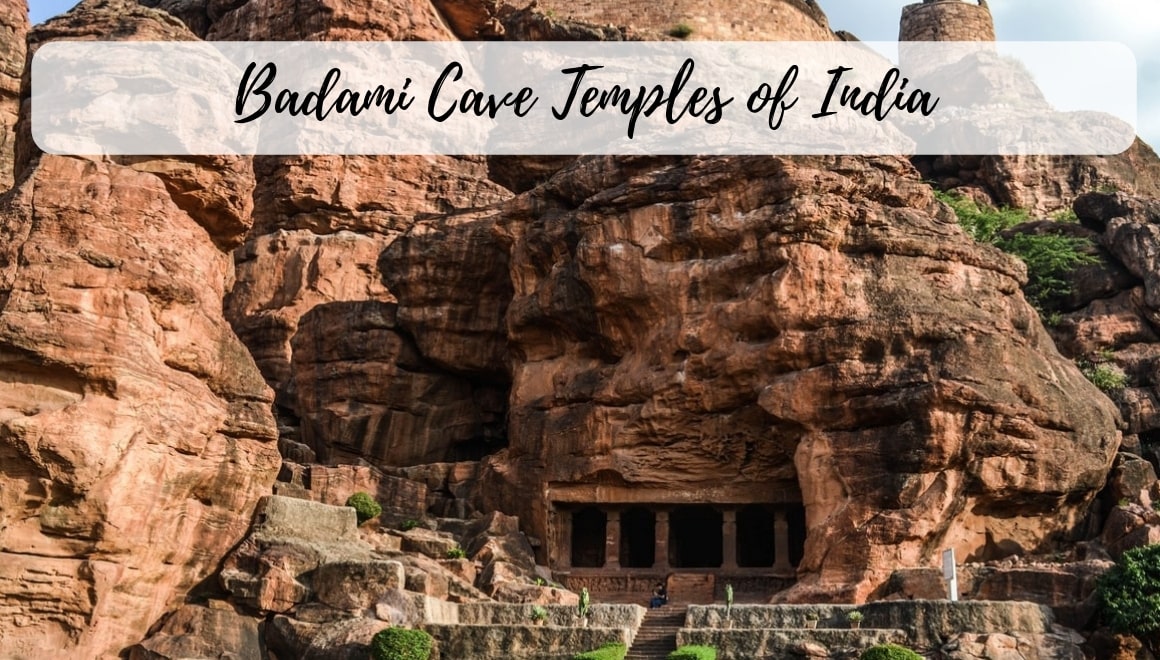Known for their historical, cultural, and architectural significance, the Badami cave temples are among the most notable examples of rock-cut architecture. Vataapinagara (Present day Badami ) was the capital city of the Chalukya dynasty. This dynasty gained power and ruled from the 6th to the 8th century. In the year 1924, these caves were identified and discovered by Stella Kramrisch. These caves are situated in a town in the Bagalkot district of Karnataka.
There are 4 cave temples numbered in their order of creation, different from their sequence. Badami cave temples are World heritage sites recognized by the United Nations.
| Cave 1 | northern Deccan style of the 6th and 7th centuries; a monolithic sculpture of Nataraja |
| Cave 2 | Lord Vishnu in his Varaha avatar |
| Cave 3 | Illustration of Vamana avatar of Lord Vishnu; colored fresco paintings |
| Cave 4 | a Jain temple adorned with images of Jain Tirthankaras and Yakshas. |
Apart from these caves, there are many other caves having medieval-era temples. Opposite Agastya Lake, there is a small cave and inside this cave, there is a statue that is quite mysterious and possesses many theories and unsolved questions. These caves feature extraordinary carvings as they were made by Chalukyas who were great patrons of art and architecture.
The architecture of Badami Cave temples
The temple is surrounded by Agastya Lake. Badami cave temples are carved out from soft sandstone cliffs that surround Agastya Lake. Each cave of this temple features intricately carved pillars, sculptures, and paintings depicting stories and scenes from Hindu epics.
Cave 1 The Shiva Temple
This cave features Nataraja (the dancing form of Lord Shiva). It is one of the finest examples of traditional South Indian craftsmanship. This cave also has Mahisasura Mardhini Carving, Harihara Carving, and Ardhanareshwara Carving.
Cave 2 The Vishnu Temple
Cave 2 is located in the north direction and above Cave 1. It has less area as compared to Cave 1 and this cave is dedicated to Vishnu in his Varaha avatar, rescuing Goddess Earth (Bhudevi). The cave illustrates mystical carvings of ganas with various facial expressions. The cave possesses a very beautiful decorative entrance with detailed carvings of dwarpaal holding flowers and garlands instead of weapons.
Cave 3 The Vishnu Trivikrama Temple
The cave depicts the Vamana avatar of Lord Vishnu, as he takes the form of a dwarf Brahmin. The notable feature of the cave is its exquisite carvings. Furthermore, this shrine is comparatively bigger than caves 1 and 2. This temple also has fresco paintings and they are rare paintings but with time they have become a bit faded.
Cave 4 The Jain Temple
This cave is a bit different because it portrays Jain Tirthankaras instead of Hindu idols. Around twenty-four Jain Tirthankaras are depicted on the walls and pillars of this cave. This cave also has some major carvings of Mahavira, Bahubali, and Parshavnath.
Agastaya Lake: A Tranquil Oasis
Agastaya Lake adds to the beauty and historical significance of the Badami Cave Temples. This river was named after Sage Agastaya and you can see pilgrims and tourists performing rituals and ceremonies on its banks. Agastaya Lake provides an aesthetic setting of the cave temples. Its picturesque setting adds a charm to the location as one can sit and reflect on the historical wonders.
These caves truly illustrate cultural legacy and inspire and captivate people from all walks of life! I hope this post piqued your interest and you must visit them to experience their magic firsthand. May the wonders of history never cease to amaze you!
City of Temples in India: Spiritual Odyssey,

